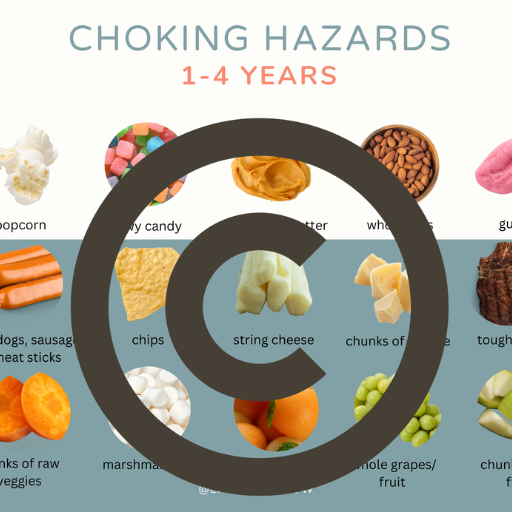
Choking is one of those worries that almost all parents, especially of babies and toddlers, are really anxious about since it is an occurrence that is notably fast and unpredictable. What is quite important is the ability to identify the typical causes of choking and to take appropriate measures to prevent these situations with young children. Choking owes its significance mainly to a variety of objects or even food items that children may swallow. This article will analyze the different objects as well as the foods that may cause choking, and offer professional advice on how to reduce the likelihood of these occurring. It is worth mentioning that by studying the factors of children’s physical growth, it would be easier to lessen the chances of some risks happening in children’s environments. In addition to that, the article will also analyze the strategies that should be put into practice during emergencies when a caregiver suspects that a child is in distress because of choking.

 Choking prevention among babies and toddlers should be approached systematically, using a preemptive focus. I recommend some common practices: for example, foods should be pre-cut into smaller pieces or shredded to avoid blockages, such as lengthwise cutting of grapes and dicing large other large slices. Choose soft materials for toys and other household items without detachable small parts. Carry out safety audits of the surrounding environment, considering risks and moving or locking all choking threats beyond children’s reach. Secure hazards such as firearms in childproof containers. Most critically, as young children swallow food and play, these persons should always be available and provide instant assistance when necessary. When followed regularly, these varied approaches enhance the chances of choking incidents while creating an environment.
Choking prevention among babies and toddlers should be approached systematically, using a preemptive focus. I recommend some common practices: for example, foods should be pre-cut into smaller pieces or shredded to avoid blockages, such as lengthwise cutting of grapes and dicing large other large slices. Choose soft materials for toys and other household items without detachable small parts. Carry out safety audits of the surrounding environment, considering risks and moving or locking all choking threats beyond children’s reach. Secure hazards such as firearms in childproof containers. Most critically, as young children swallow food and play, these persons should always be available and provide instant assistance when necessary. When followed regularly, these varied approaches enhance the chances of choking incidents while creating an environment.
 It is important to state that there are specific children’s meals that pose high risks of choking. These include small and round meals like grapes and cherry tomatoes, which must be cut into four pieces to avoid obstruction of air tubes. Seeing this, hard foods, which include raw carrots, whole apples, and chunks of meat, are of concern. They ought to be cut into thin slices. Furthermore, sticky and chewy substances including pb and marshmallows, should not be served in their normal form, as they can block airways, and should instead be served as thin layers or smaller pieces. The other cases that should be disregarded are whole nuts, popcorn, and hard candy, which are known to be difficult to swallow. The main cause of this is the ability of these foods to block airways, and therefore, the provision of such foods must be done with caution to minimize the chances of reproduction of the choking action.
It is important to state that there are specific children’s meals that pose high risks of choking. These include small and round meals like grapes and cherry tomatoes, which must be cut into four pieces to avoid obstruction of air tubes. Seeing this, hard foods, which include raw carrots, whole apples, and chunks of meat, are of concern. They ought to be cut into thin slices. Furthermore, sticky and chewy substances including pb and marshmallows, should not be served in their normal form, as they can block airways, and should instead be served as thin layers or smaller pieces. The other cases that should be disregarded are whole nuts, popcorn, and hard candy, which are known to be difficult to swallow. The main cause of this is the ability of these foods to block airways, and therefore, the provision of such foods must be done with caution to minimize the chances of reproduction of the choking action.
 The expert’s way of dealing with choking episodes in children aged four and below must be composed and instantaneous, which seems to be the ideal response. The first, if the child is able to breathe or cough in order to displace the foreign body, allows the child to continue coughing. If they are able to breathe well, back blow,s or attempts at abdominal thrusts should be avoided. If the child is unable to breathe, cough, or talk, then commence with back blows and slapping of the chest. The child should be placed so that their tummy is on your forearm with their head lower than their chest, and then, stoutl,y slap five times in the mid-section of the child's back. If the foreign body has not been removed, put the child on his/her back and, with two fingers, slapping the chest, apply pressure to the breastbone close to one and a half inches and continue this motion five times. The two up till now should be repeated in the order given, the first until the passageway is unblocked or medical help shows up. If the quality of health of the child warrants or a foreign body is still in the throat, then the help of emergency services must be sought.
The expert’s way of dealing with choking episodes in children aged four and below must be composed and instantaneous, which seems to be the ideal response. The first, if the child is able to breathe or cough in order to displace the foreign body, allows the child to continue coughing. If they are able to breathe well, back blow,s or attempts at abdominal thrusts should be avoided. If the child is unable to breathe, cough, or talk, then commence with back blows and slapping of the chest. The child should be placed so that their tummy is on your forearm with their head lower than their chest, and then, stoutl,y slap five times in the mid-section of the child's back. If the foreign body has not been removed, put the child on his/her back and, with two fingers, slapping the chest, apply pressure to the breastbone close to one and a half inches and continue this motion five times. The two up till now should be repeated in the order given, the first until the passageway is unblocked or medical help shows up. If the quality of health of the child warrants or a foreign body is still in the throat, then the help of emergency services must be sought.
 Children are allowed to explore solid substances independently for biological and neurophysiological development. In this context, when done thoughtfully and based on sound principles, food can be treated as a source of choking hazards. Thus, as an industry expert, the guidance for parents wishing to take a baby-led weaning approach can include the following: when offering ‘first foods,’ begin with soft ones like ripe bananas, avocados, or cooked sweet potatoes that can be squished with gums; cut foods into suitable shapes – long strips or small pieces suitable for a baby to hold and munch; supervise the child throughout the feeding session as children need to be focused and still when eating; try not to offer food that is known to pose a significant choking risk, such as whole nuts, or large lumps of meat; and lastly, explain to every carer the methods of baby-led weaning and the first-aid measures. Following such guidelines, parents and other adult caregivers will establish a safe and conducive environment where the child will learn and experiment with new textures and tastes.
Children are allowed to explore solid substances independently for biological and neurophysiological development. In this context, when done thoughtfully and based on sound principles, food can be treated as a source of choking hazards. Thus, as an industry expert, the guidance for parents wishing to take a baby-led weaning approach can include the following: when offering ‘first foods,’ begin with soft ones like ripe bananas, avocados, or cooked sweet potatoes that can be squished with gums; cut foods into suitable shapes – long strips or small pieces suitable for a baby to hold and munch; supervise the child throughout the feeding session as children need to be focused and still when eating; try not to offer food that is known to pose a significant choking risk, such as whole nuts, or large lumps of meat; and lastly, explain to every carer the methods of baby-led weaning and the first-aid measures. Following such guidelines, parents and other adult caregivers will establish a safe and conducive environment where the child will learn and experiment with new textures and tastes.
What are the Choking Hazards for Babies?

Identifying Choking Hazards for Babies
It is essential to pinpoint the objects and foodstuffs that pose a choking risk to infants. Items frequently encountered include small toys, marbles, and bits of balloons, all of which, when swallowed, can block a baby's airways. Among the food, whole grapes, nuts, popcorn, and large pieces of meat or cheese are often too large to be safe and are thus frequently available. These items can easily get stuck in the baby’s comparatively small windpipe. Preventative measures mean careful monitoring of the child while he plays and eats, as well as ensuring the use of appropriate toys and foods based on the child’s age. The chances of a child choking on an object are greatly reduced by adhering to these pre-emptive strategies.Common Choking Hazards in Babies and Toddlers
Mostly often perceived as frivolous choking hazards, they appear much more dangerous in the hands of inquisitive toddlers. In my position, I conduct choking risk assessments as described in the dimensions of the hazards. Toy parts that may become loose and separable, coin-cell batteries, and beads or other objects with a coin-like shape are simply inhaled or swallowed and can lead to airway obstruction. Choking, in the case of a toddler, can also occur when the child reaches a certain depth with regard to inquisitiveness, accidentally consuming solids that may be larger than they should be. Due to the extreme nature of the exploratory behavior in toddlers, choking-like risks from food choking due to hard candy, raw vegetables, and big pieces of fruit being consumed tend to be consistent as well. Ceasing to revise these risks is essential, considering that children grow and acquire na ew set of motor competencies with time.Identifying Potential Choking Hazards at Home
I fully understand that attempting to locate possible choking risks in the house is not an intuitive task. To examine the risk factors, let the analysis be structured as follows:- Size and Shape: Any object that is small enough to pass through an average toilet paper roll is classified as a choking hazard. The test is helpful and facilitates the speedy scrutiny procedure of tiny parts that may be capable of;
- Material: Hard materials such as plastic, metals, or rubber have a high risk of being ingested leading to a choking hazard. The softer or edible ones should be screened for their dimensions and the surface texture as their primary concern.
- Detachable Parts: Items or toys that have small separable parts can be very dangerous. Routine checks for some of the parts that are likely to become detached may help in the early detection and assessment of such hazards.
- Accessibility: Small things should be positioned where children cannot reach them. Assessment should be on a regular basis of how high objects are placed, and even the location of such items to find out if they are in drawers or cabinets where young children can easily reach and open.
- Supervision: Active supervision of children should take place at all times particularly during meals and when the child is playing. Being alert and attentive in such situations may help in controlling some dangerous events since they happen quite often.
How to Make a Choking Hazard Safe
From the point of view of an industry expert, making a dangerous object safe for the child is a matter that can be addressed through relatively simple measures that any parent or caretaker can carry out. Here’s how you do it:- Modify the Size and Shape: As for food, chopping food into smaller pieces lessens the risk of choking. For instance, grapes can be halved, and larger pieces of the food can be cut into small nibbles. For toys, try to ensure that they are oversized and cannot be placed inside the mouth of a toddler.
- Alter the Material: If it is possible, opt for a soft grit that would easily be swallowed and would not cause any harm. When purchasing toys or even household items, look for items made of soft materials that do not break up into small hard objects.
- Secure Detachable Parts: Mending Loose Parts Easily Detected Materials / miscellaneous, regular wire to loose parts of toys and artefacts as well as common house hold materials. If you have sharp bits of wires flying around you, look for child locks or screws which are not going to damage your teeth and mend the parts securely if the parts may not be placed together.
- Control Accessibility: Keep small or harmful items at a distance from where a toddler can reach. Make use of locks fitted on cupboards and secured cabinets to stop a child from gaining reach to sharp objects which can be a tripping hazard or cause injury.
- Ensure Supervision: Monitoring children especially younger children should be done closely, while they are either eating or during play periods that involve the use of small toys or objects. This makes it possible to respond fast, for example when chocking is suspected to have taken place.
How Can We Prevent Choking in Babies and Toddlers?
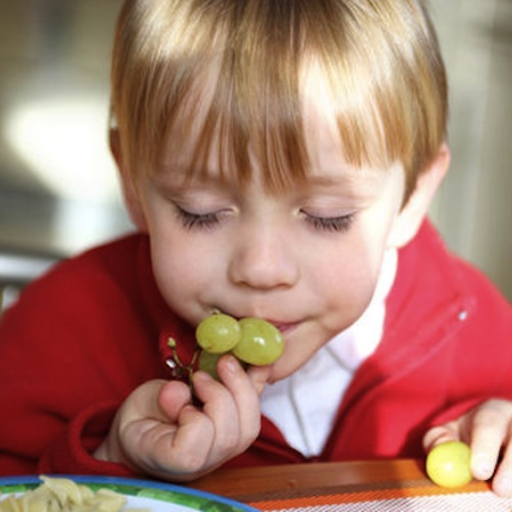 Choking prevention among babies and toddlers should be approached systematically, using a preemptive focus. I recommend some common practices: for example, foods should be pre-cut into smaller pieces or shredded to avoid blockages, such as lengthwise cutting of grapes and dicing large other large slices. Choose soft materials for toys and other household items without detachable small parts. Carry out safety audits of the surrounding environment, considering risks and moving or locking all choking threats beyond children’s reach. Secure hazards such as firearms in childproof containers. Most critically, as young children swallow food and play, these persons should always be available and provide instant assistance when necessary. When followed regularly, these varied approaches enhance the chances of choking incidents while creating an environment.
Choking prevention among babies and toddlers should be approached systematically, using a preemptive focus. I recommend some common practices: for example, foods should be pre-cut into smaller pieces or shredded to avoid blockages, such as lengthwise cutting of grapes and dicing large other large slices. Choose soft materials for toys and other household items without detachable small parts. Carry out safety audits of the surrounding environment, considering risks and moving or locking all choking threats beyond children’s reach. Secure hazards such as firearms in childproof containers. Most critically, as young children swallow food and play, these persons should always be available and provide instant assistance when necessary. When followed regularly, these varied approaches enhance the chances of choking incidents while creating an environment.
Steps to Prevent Choking During Mealtime
The risk of choking during feeding is often a great concern for many parents and caregivers. I always make it a point to reduce the risk of choking by modifying the way the food is prepared and presented. Most of the time, I cut food into small pieces that children can easily scoop without the risk of choking. Also, I never serve food like whole nuts or semi-solid lumps of peanut butter, which are choking hazards. Another strategy is to reduce the chances that children rush through their meals and swallow things without fully chewing them. For example, I often remind caregivers that children will often copy what they see their parents do, so it is advisable to always model safe eating practices. Finally, I strongly believe that supervision is key. Always keep an eye on young children during mealtimes so this prevention strategy can be put into practice. Children can be unpredictable,e so all caregivers need to be prepared to handle unanticipated situations when they happen. Adherence to this thorough approach can help alleviate any possible fears of choking around young children.Choosing Baby Safe and Safe Toys for Your Child
Because you understand the importance of safety in children, as an industry expert, you must be aware that there are a few critical parameters that must be observed when selecting baby-safe toys so that each selection suits your child’s needs. Let me break it down for you:- Age Appropriateness:When considering a toy for a child, it is important to refer to the age recommendations prepared by the makers of the toy. The importance of these guidelines is in securing the fact that the toy is appropriate and functional at a shredding stage, avoiding possibilities such as swallowing, choking from small items such as voice components, etc.
- Material Safety: Look chemically active substances out of each toy. Plastic toys free from BPA or any other harmful materials, real woods or organic fabric crafted toys, and other substance should be official and sought after. Items with lead paint should also be excluded since they can be hazardous.
- Size and Shape: Any child`s toy probably should be larger in periphery and diameter than a child’s mouth to minimize the chances of choking. There should be softer patterned shapes devoid of sharp edges in the toys to reduce chances of accidents.
- Durability: Pick heavy duty features that will not break and besides will not break into smaller pieces while in the hands of young users able to exhibit vigorous activity. Such toys reduce the chances of breaching the minimal rule of kids’ toys and breaking them into several components for accidental swallowing or inhalation.
- Attachment Security: It is important to examine the toy for the presence of small and potentially dangerous parts that might fracture when the toy is in use. This includes making sure that components are held in safe positions and cannot be pulled off easily.
- Simplicity and Functionality: simple toys with better aesthetic considerations or those designed for enhancing exploration and interesting imaginative play features; rather than poorly designed toys with complicated fine manipulative parts. They are sophisticated toys which enhance development in learners but are associated with unnecessary risks.
- Regulatory Compliance: Ensure that the selected toys meet the appropriate safety standards, such as those set by the CPSC. These standards are aimed at ensuring compliance with safety requirements of the toys.
Preparing for a Choking Episode
This school turner emphasizes your stance as an industry specialist and somehow tells you which actions you need to take in case there is any unlikely event of a young child choking. These are the notes that need to be made in simple language that everyone understands:- Learn First Aid Techniques: Understand how to perform basic first aid procedures such the Heimlich maneuver as well as CPR, cardiopulmonary resuscitation, specifically modified for infants and toddlers. Training in such methods can be beneficial.
- Stay Informed: Receive guidance and keep yourself updated with guidelines and policies from organizations such as the American Red Cross or the health department on prevention of choking and measures to be taken in case of an emergency.
- Supervised Environments: Ensure that children are controlled during meals as well as during playtime which definitely works as a precautionary measure in case choking becomes an issue. This assures that if there is need for intervention, it can be addressed immediately.
- Remove Hazards: Conduct periodic evaluations of the homes to check for choking dangers such as tiny objects or little toys with removable parts to reduce the possibility of such dangers occurring.
- Emergency Numbers: Maintain a list of emergency calls that include poison control telephone numbers, and other emergency services to be able to contact them at ease. This is also helpful in case there is an urgent need to contact such services.
What Foods Pose a Choking Hazard for Toddlers?
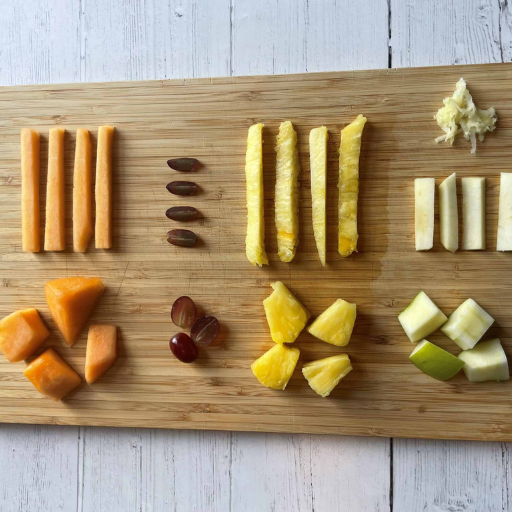 It is important to state that there are specific children’s meals that pose high risks of choking. These include small and round meals like grapes and cherry tomatoes, which must be cut into four pieces to avoid obstruction of air tubes. Seeing this, hard foods, which include raw carrots, whole apples, and chunks of meat, are of concern. They ought to be cut into thin slices. Furthermore, sticky and chewy substances including pb and marshmallows, should not be served in their normal form, as they can block airways, and should instead be served as thin layers or smaller pieces. The other cases that should be disregarded are whole nuts, popcorn, and hard candy, which are known to be difficult to swallow. The main cause of this is the ability of these foods to block airways, and therefore, the provision of such foods must be done with caution to minimize the chances of reproduction of the choking action.
It is important to state that there are specific children’s meals that pose high risks of choking. These include small and round meals like grapes and cherry tomatoes, which must be cut into four pieces to avoid obstruction of air tubes. Seeing this, hard foods, which include raw carrots, whole apples, and chunks of meat, are of concern. They ought to be cut into thin slices. Furthermore, sticky and chewy substances including pb and marshmallows, should not be served in their normal form, as they can block airways, and should instead be served as thin layers or smaller pieces. The other cases that should be disregarded are whole nuts, popcorn, and hard candy, which are known to be difficult to swallow. The main cause of this is the ability of these foods to block airways, and therefore, the provision of such foods must be done with caution to minimize the chances of reproduction of the choking action.
List of Foods to Prevent Choking
I suggest emphasizing the dimensions and the texture of the foods in order to alleviate choking hazards. Some foods that can be regarded are:- Cooked Vegetables: Slowly cook vegetables like peas and diced carrots instead of raw vegetables, which are hard and a possible source of choking.
- Soft Fruits: When feeding a young child, give them some soft ripe fruits such as bananas or cut up avocado which are easier to eat.
- Smooth Nut Butter: These are also very good when spread thinly on bread or crackers since they deliver nutrients without confounding the eating process with thick and clumpy portions.
- Shredded Meats: Instead of large chunks, provide small, tender pieces of cooked chicken or beef that have been pulled apart or shredded for easy swallowing.
- Soft-Cooked Pasta: For toddlers, small, tubular shapes pasta like macaroni is quite appropriate when well boiled because they are soft, chewable, and easy to swallow.
The Danger of Whole Grapes and Hot Dogs
If I mention that grapes and hot dogs are the two most common choking threats for toddlers, know that I know what I am talking about, as I am an industry expert. Allow me to elaborate on what makes these foods dangerous and how they should be dealt with safely:- Size and Shape: Whole grapes and hot dogs are particularly dangerous because of their relatively small and round shape, similar to the size of a young child's windpipe. This makes it easy for them to block the airway if swallowed whole.
- Consistency: These foods have a relatively smooth surface, which allows them to slide easily down the throat if a child attempts to swallow them without chewing first.
- Action Steps: In order to avoid the risk, both grapes and hot dogs should be served after cutting them. The former should be halved and the latter should be sliced into halves. These modifications do not alter their shapes but do reduce the chances of obstruction.
- Supervision: Young children should always be monitored when consuming these foods. Additional measures include encouraging them to chew their food properly and eat at a slower pace.
- Education: If family members and child caregivers are informed about hazards of choking with these foods and conducting the food preparations properly one can create a much safer eating environment for children.
The Choking Risk from Popcorn and Small Parts
Certainly, here are some easy-to-understand reasons for why popcorn and small parts are choking hazards for toddlers: Let’s take a closer look at this.- Texture and Size of Popcorn: The kernel of popcorn is light and airy, yet there exist unpopped hard seeds which can be easily caught in the throat, being a health hazard. These seeds can serve as an airway obstruction as they can be inhaled but are rather excessively large to be swallowed.
- Inhalation Risk: As popcorn is generally considered a light snack, children consume it in one go, leading to the risk of it being inhaled. This risk also increases when children are active or are a bit too joyful for their own good: they may absorb tiny pieces into their airways without noticing it.
- Danger of Small Parts: Other objects that have small parts, like toys, are equally dangerous in terms of choking hazards. This includes parts that may have fallen off bigger toys such as buttons, small beads, or small building blocks. These are particularly hazardous because they are often very small, can easily fit into a child's mouth, and can be unintentionally swallowed.
- Visibility and Awareness: The problem arises in the fact that only a few scattered small parts are in plain sight on the floor or play area, hence children are easily able to scoop them up and put them in their mouths. There should be routine monitoring of toys and play areas to locate and remove such risks.
How to Handle a Choking Episode in Children Under Four
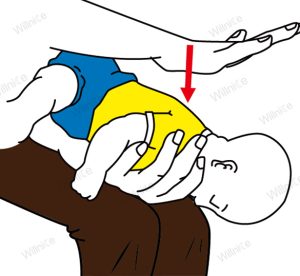 The expert’s way of dealing with choking episodes in children aged four and below must be composed and instantaneous, which seems to be the ideal response. The first, if the child is able to breathe or cough in order to displace the foreign body, allows the child to continue coughing. If they are able to breathe well, back blow,s or attempts at abdominal thrusts should be avoided. If the child is unable to breathe, cough, or talk, then commence with back blows and slapping of the chest. The child should be placed so that their tummy is on your forearm with their head lower than their chest, and then, stoutl,y slap five times in the mid-section of the child's back. If the foreign body has not been removed, put the child on his/her back and, with two fingers, slapping the chest, apply pressure to the breastbone close to one and a half inches and continue this motion five times. The two up till now should be repeated in the order given, the first until the passageway is unblocked or medical help shows up. If the quality of health of the child warrants or a foreign body is still in the throat, then the help of emergency services must be sought.
The expert’s way of dealing with choking episodes in children aged four and below must be composed and instantaneous, which seems to be the ideal response. The first, if the child is able to breathe or cough in order to displace the foreign body, allows the child to continue coughing. If they are able to breathe well, back blow,s or attempts at abdominal thrusts should be avoided. If the child is unable to breathe, cough, or talk, then commence with back blows and slapping of the chest. The child should be placed so that their tummy is on your forearm with their head lower than their chest, and then, stoutl,y slap five times in the mid-section of the child's back. If the foreign body has not been removed, put the child on his/her back and, with two fingers, slapping the chest, apply pressure to the breastbone close to one and a half inches and continue this motion five times. The two up till now should be repeated in the order given, the first until the passageway is unblocked or medical help shows up. If the quality of health of the child warrants or a foreign body is still in the throat, then the help of emergency services must be sought.
Recognizing the Signs of a Choking Hazard
The art of recognizing the risks associated with a child choking is pertinent for every individual who has to care for young children. My clinical experience leads me to appreciate that prevention is possibly the best approach to guaranteeing a safe environment for children. In most cases, these signs include the child pointing towards the mouth, having trouble breathing, experiencing gagging or coughing, and showing the child in panic without the ability to cry or make any noise. Another one is a child striking their neck with their hands, a gesture known to most people in the world as the choking sign. As I have said before, quick response in such kind of circumstances saves lives. Education, in this case, always remains the first place to prevent “strangulated” incidents – informative averting maximum food size, practicing safe eating habits, and inspecting the play area. However, how to recognize these cues enables caregivers to assist children in choking prevention as quickly and as efficiently as possible.Immediate Steps to Prevent Choking
In order to prevent choking hazards in toddlers, it takes a routine of a few critical procedures, which are simple to learn in a practical and effective manner. This is what you have to do:- Modify Food Textures and Sizes: Areas for self-feeding involving foods such as grapes, hotdogs, and vegetables should be small so that these can be put in the mouth without any effort. The level of cutting also helps in minimizing the chances of obstruction by a chunk of food pieces.
- Supervise During Meals: There should be an adult present in their vicinity whenever the child is having their meal. They need to be encouraged to munch their food slowly so as to not cause hasty lucidities. This can avert the danger of getting choked due to fast swallowing.
- Create a Safe Eating Environment: To prevent any kind of mess, children should not be allowed to engage in food for distractions such as games or TV. Also, aim for proper seating where the child is completely straight and prepared for the food.
- Inspect Play Areas Regularly: There should be efforts made to find out whether their toy possess any detachable parts or need to be avoided if they aren’t suited for the kids interests. Checkability of the toy’s age and structural design is recommended.
- Educate About Choking Hazards: Learning the Cautious and also the Vulnerable sides: Assure family and caregivers of how kids are vulnerable to choking and which objects in the house pose possible choking hazards and how measures should be employed. Knowledge sharing is preventive in itself.
- Emergency Preparedness:Be prepared before hand on how you can assist a child who has a choking incident. For instance, how to do back slaps and abdominal thrusts can be life saving. Also, always have contacts ready where you can seek professional assistance.
Importance of an Infant CPR Course
I would like to point out that an Infant CPR course is a fundamental course for parents and caregivers in relation to emergencies that involve young children, especially those in cases of choking. Such specialized courses teach the guardians of young infants necessary lifesaving techniques. Comprehension of how to perform CPR appropriately can save lives when delay is most crucial since it helps preserve blood circulation and oxygen to the brain until assistance arrives. Moreover, by learning the specifics of an infant’s anatomy and how CPR has to be modified, caregivers will be more prepared for circumstances that are atypical of older children. The importance of preparing and taking an Infant CPR course cannot be overstated since it not only develops the skills but also ensures a state of alertness, which is important in promoting the safety of children.What Are Safe Practices for Baby-Led Weaning?
 Children are allowed to explore solid substances independently for biological and neurophysiological development. In this context, when done thoughtfully and based on sound principles, food can be treated as a source of choking hazards. Thus, as an industry expert, the guidance for parents wishing to take a baby-led weaning approach can include the following: when offering ‘first foods,’ begin with soft ones like ripe bananas, avocados, or cooked sweet potatoes that can be squished with gums; cut foods into suitable shapes – long strips or small pieces suitable for a baby to hold and munch; supervise the child throughout the feeding session as children need to be focused and still when eating; try not to offer food that is known to pose a significant choking risk, such as whole nuts, or large lumps of meat; and lastly, explain to every carer the methods of baby-led weaning and the first-aid measures. Following such guidelines, parents and other adult caregivers will establish a safe and conducive environment where the child will learn and experiment with new textures and tastes.
Children are allowed to explore solid substances independently for biological and neurophysiological development. In this context, when done thoughtfully and based on sound principles, food can be treated as a source of choking hazards. Thus, as an industry expert, the guidance for parents wishing to take a baby-led weaning approach can include the following: when offering ‘first foods,’ begin with soft ones like ripe bananas, avocados, or cooked sweet potatoes that can be squished with gums; cut foods into suitable shapes – long strips or small pieces suitable for a baby to hold and munch; supervise the child throughout the feeding session as children need to be focused and still when eating; try not to offer food that is known to pose a significant choking risk, such as whole nuts, or large lumps of meat; and lastly, explain to every carer the methods of baby-led weaning and the first-aid measures. Following such guidelines, parents and other adult caregivers will establish a safe and conducive environment where the child will learn and experiment with new textures and tastes.
Understanding Baby-Led Weaning and Choking Hazards
Baby-led weaning is a practice where a child of 6 months or older is encouraged to self-feed without interference from the father or the mother. The process is not without gentle complications, but with concentration, it can be achieved without any serious injuries or hazards involved. The basic aims are the achievement of controlled movement of the tongue in the lateral directions, the development of the oral and facial muscles to enable scooping movements while feeding, and the development of coordinated chewing patterns. Active changes in the child’s diet contribute greatly to the achievement of these goals. It is essential to select the appropriate ingredients for activities like this. Careful consideration must be made to cut food items into safe sizes, and constant monitoring must be made of the child by caregivers during meals, especially at tender ages. This strategy helps minimize the risk of potential choking hazards. Also critical is the education of all caregivers regarding the dangers present and also basic emergency response measures. So, by combining informative food choice approaches together with monitoring aspects, this process not only becomes informative but also enriches the developing stage of the child’s various skills.Preparing Finger Foods for Babies and Toddlers
As per industry standards, when preparing finger foods for babies and toddlers, one must consider the selection of healthy, suitable, and safe finger foods for the children’s development stage. A good start would be finger foods that are easily accessible for infants, e.g., steamed vegetables, stages of soft fruits, pieces of toast, or pancakes as long as they are bearing. Such foods should be cut into strips or pieces that make it easier and safer for the children to self-feed. Do not offer hard, round, chunky, or sticky foods that are hard to dissolve in the mouth. They are potential risks. Choking prevention methods should be practiced by all caregivers. They should also be on the constant lookout during the meals. If such principles are followed, young children can be served safely while at the same time having a broad variety of choices.Ensuring Foods for Babies Are Safe for Toddlers
Baby foods are designed for babies, but their safety for older children, i.e., toddlers, requires a thorough understanding of their developmental phases and safety concerns. Although toddlers have better chewing skills and can tolerate a wider range of textures, the risk of choking still remains. Offer foods that are still soft and chewable, such as small pieces of cooked vegetables and fruits, but refrain from using hard or round foods that can block the trachea. Also, the size and shape have to correspond with the paradigm of self-feeding for toddlers to encourage them to be independent, albeit in a safe manner. Meal supervision has to be emphasized at all times, together with continued awareness of the caregivers regarding the food level that is appropriate for the child’s age and what to do in case of accidents. This strategy guarantees a secure transformation of dietary stages with growth in age.Reference
- CDC - Choking Hazards
- HealthyChildren.org - Choking Prevention for Babies & Children
- UnityPoint Health - Top 10 Food Choking Hazards for Babies & Toddlers
Frequently Asked Questions (FAQs)
Q: What are the top choking hazards for babies and toddlers?
A: Common choking hazards for babies and toddlers include small, hard foods like nuts and popcorn, round foods like grapes and cherry tomatoes, and sticky foods like peanut butter. Toys and household items such as small batteries, coins, and buttons can also become a choking hazard.Q: How can I prepare for choking emergencies involving my young child?
A: To prepare for choking emergencies, consider taking an infant CPR course and identify emergency resources and contacts in your area. Watching your child during meals and playtime is crucial, as is ensuring that all caregivers, including babysitters, are aware of the risks and know how to respond.Q: At what age is it safe to introduce solid foods to your baby?
A: Most pediatricians recommend introducing solid foods to your baby around 6 months old when they are able to sit up with minimal support and have lost the tongue-thrust reflex. It's important to start with pureed or very soft foods and gradually introduce more textures as they grow.Q: Why is it important to avoid giving certain foods to children under the age of 4?
A: Children under the age of 4 are at a higher risk of choking due to their smaller airways and underdeveloped chewing abilities. Avoid giving foods that can easily block their airway, such as whole grapes, nuts, and hard candies, to ensure they are safe for your child.Q: How can baby-led weaning help your child become a confident eater?
A: Baby-led weaning encourages babies to explore different textures and sizes of food at their own pace, promoting self-feeding and chewing skills. Always ensure that foods are cut into pieces no larger than the size of a drinking straw to minimize the risk of choking.Q: What should I do if an object fits into the size of a drinking straw?
A: If an object fits into the size of a drinking straw, it can easily block a baby's airway and become a choking hazard. Avoid giving such small items to babies and kids, and always supervise young children during playtime.Q: How can I prevent choking hazards when spoon-feeding my baby?
A: When spoon feeding your baby, ensure that the food is a smooth puree, without any lumps or chunks that could get stuck in their throat. Always watch your child closely as they eat and only offer small spoonfuls at a time.Q: What role does a dietitian play in preventing choking risks for young children?
A: A dietitian can provide guidance on what foods are considered safe for young children, help parents create balanced and nutritious meal plans, and offer strategies to address issues like picky eating while minimizing the risk of choking.Q: How can parents identify foods that are safe for their children?
A: Parents can identify foods to make safe by ensuring they are cut into appropriate sizes, such as thin strips or small pieces no bigger than a pinky finger. Avoid giving foods that are sticky, hard, or round in shape, and opt for alternatives that are easily chewable and less likely to become a choking hazard.Q: Why is it important to have a team of experts to determine if something is safe for children?
A: Having a team of experts, including pediatricians and dietitians, helps ensure that the foods and items given to children are safe and appropriate for their developmental stage. They provide valuable insights into preventing choking and addressing other potential hazards for babies and toddlers.1622



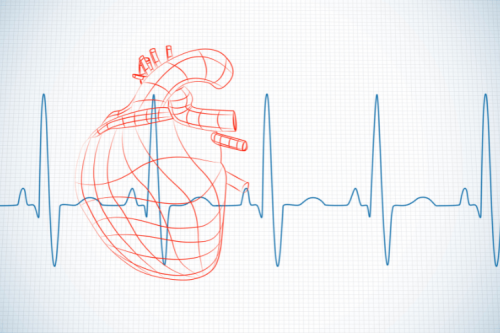


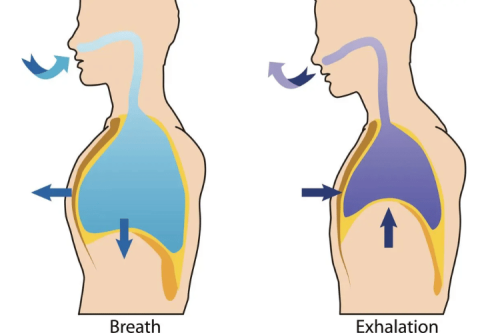
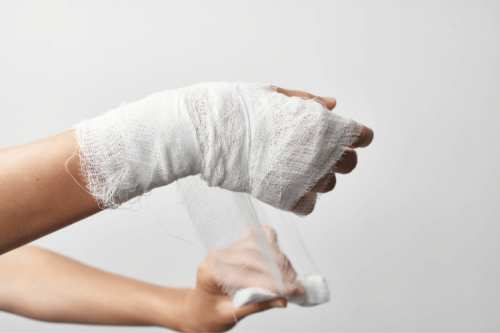
 Login with Google
Login with Google Login with Facebook
Login with Facebook